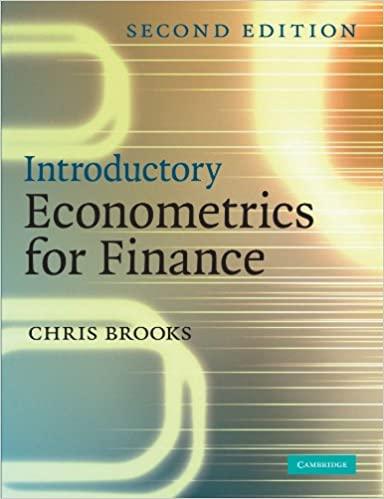(a) What is a switching model? Describe briefly and distinguish between threshold autoregressive models and Markov switching...
Question:
(a) What is a switching model? Describe briefly and distinguish between threshold autoregressive models and Markov switching models. How would you decide which of the two model classes is more appropriate for a particular application?
(b) Describe the following terms as they are used in the context of Markov switching models
(i) The Markov property
(ii) A transition matrix.
(c) What is a SETAR model? Discuss the issues involved in estimating such a model.
(d) What problem(s) may arise if the standard information criteria presented in chapter 5 were applied to the determination of the orders of each equation in a TAR model? How do suitably modified criteria overcome this problem?
(e) A researcher suggests a reason that many empirical studies find that PPP does not hold is the existence of transactions costs and other rigidities in the goods markets. Describe a threshold model procedure that may be used to evaluate this proposition in the context of a single good.
(f) A researcher estimates a SETAR model with one threshold and three lags in both regimes using maximum likelihood. He then estimates a linear AR(3) model by maximum likelihood and proceeds to use a likelihood ratio test to determine whether the non-linear threshold model is necessary. Explain the flaw in this approach.
(g) ‘Threshold models are more complex than linear autoregressive models. Therefore, the former should produce more accurate forecasts since they should capture more relevant features of the data.’ Discuss.AppendixLO1
Step by Step Answer:






